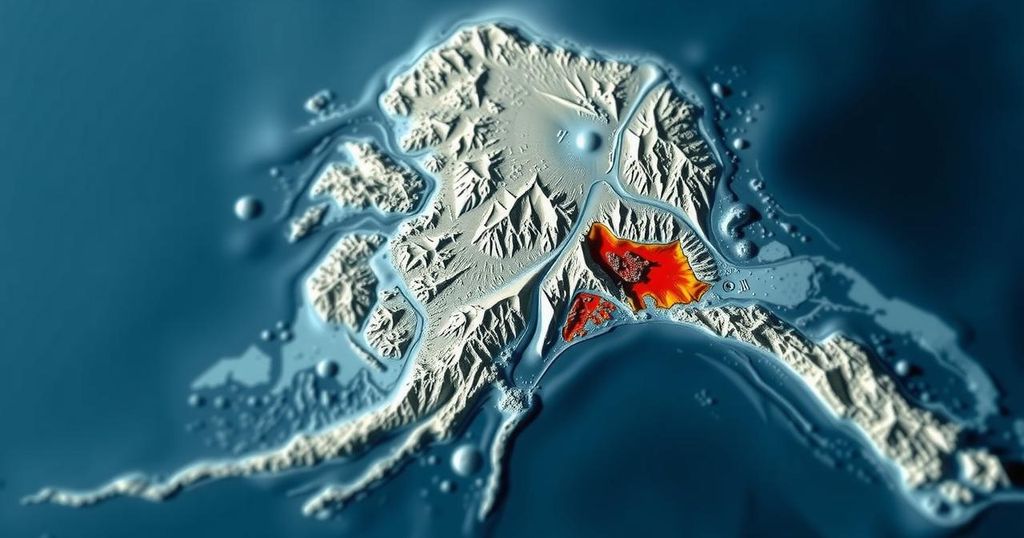A magnitude 1.7 earthquake occurred 29 miles north of Valdez, Alaska, on November 27, 2024, at a depth of 19 miles. This region’s seismicity is influenced by interactions between the Pacific and North American plates, with historical events showing the potential for significant earthquakes. Understanding the tectonic framework is vital for risk assessment and preparedness.
On November 27, 2024, at 04:23:55 AKST, a magnitude 1.7 earthquake was recorded 29 miles north of Valdez, Alaska, at a depth of 19.0 miles. This event, as noted, has not undergone evaluation by a seismologist. It occurred in proximity to several significant locations, lying 40 miles northwest of Thompson Pass and 46 miles north of Tatitlek, among others.
The tectonic activity of Southern Alaska is influenced largely by multiple geological features. Notably, the most powerful earthquakes are a consequence of the megathrust fault at the boundary of the subducting Pacific Plate and the overlying North American Plate. The 1964 M9.2 Great Alaska Earthquake, recorded as the second largest globally, exemplified this seismic activity, originating in Prince William Sound. Additionally, intermediate-depth seismic events occur in the Wadati-Benioff Zone as the Pacific Plate descends towards the Earth’s mantle, extending across the Aleutian Arc and into other regions.
The latest significant events in this zone include the 2016 M7.1 Iniskin and the 2018 M7.1 Anchorage earthquakes, both of which resulted in considerable ground shaking and damage. Furthermore, crustal seismicity results from various sources, including the Cook Inlet basin faults and the Castle Mountain Fault, which have historically produced powerful earthquakes, such as the 1933 M6.9 earthquake causing extensive damage in Anchorage.
Geological structures in the Cook Inlet region demonstrate the potential for substantial earthquakes, with historical occurrences substantiating this risk. The Castle Mountain Fault, for instance, showed evidence of Holocene offsets and was responsible for the 1984 M5.6 Sutton Earthquake. Furthermore, a broader zone of seismicity exists between Cook Inlet and the Denali Fault, indicating complex geological interactions in this actively deforming area.
Southern Alaska is characterized by its active tectonic environment, where the interaction of the Pacific and North American plates leads to notable seismic events. The region’s geological dynamics include the megathrust fault, the Wadati-Benioff Zone, and various local fault systems, contributing to both surface-level and intermediate-depth earthquakes. Understanding these geological structures is crucial for seismic risk assessment and preparedness in the region.
In conclusion, the recorded magnitude 1.7 earthquake near Valdez underscores the ongoing seismic activity in Southern Alaska. With significant tectonic features responsible for both powerful historical earthquakes and ongoing geological interactions, it is essential to remain cognizant of the potential for future seismic events. Continuous monitoring and research will enhance our understanding of this complex tectonic landscape and inform public safety measures.
Original Source: earthquake.alaska.edu






